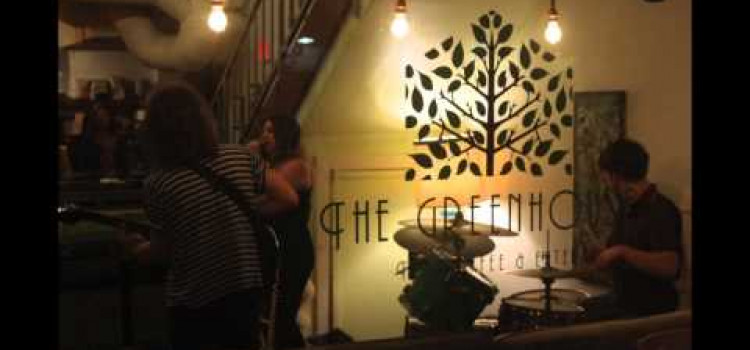

If you live in a big city, like Los Angeles, you could easily become spoiled from the abundance of entertainment that is available to you. One minute you could be hopping the bars in downtown, then within minutes become immediately surrounded by the noise and dancing of a Hollywood nightclub. Having too many choices almost becomes a problem for an Angeleno.
But if an Angeleno were to enter Long Beach with that mindset, they might feel as though they’re entering wildly new territory. It is widely known that Long Beach has been a hub for cutting edge music for years, producing internationally recognized artists like Sublime and Snoop Dogg, among others. But with very few music venues currently open for business, Long Beach would at first glance look like a barren wasteland.
Venues like Vault 350 and Fender’s Ballroom that once provided musicians a space to be free and hone their styles, have long since disappeared.
“Long Beach is a great incubator but you can only go so far here,” said Cat Chambers, lead singer of The Doggerels. “When you’re really going to start playing shows you go to L.A. and Long Beach misses out.”
Chambers, alongside her bandmates, drummer Thomas Williams and guitarist Christian Vannasdall, says feel like the city is in need of more places to showcase music.
“It gets to a point that when bands get big enough they just move to L.A. because there’s no theater venue, there’s nothing focused on music here,” Williams said.
Despite some music exodus, there are a few individuals in the city who have been advocating to foster music in Long Beach in the hopes of bringing back the popularity it once had.
“There has always been a thriving and dynamic music culture in Long Beach,” said Sander Wolff, a cultural agent columnist for LBPost.com who has been involved with the Long Beach music scene since the late 80’s. “There have been many isolated scenes, each operating independently of each other. This is, as far as I can tell, still true.”
Being both a musician and journalist, Wolff has seen first hand what factors have set back live entertainment in Long Beach.
“The challenge that most people seem to experience is that rock venues are in short supply, and this is no accident,” said Wolff who argues that the municipal government has created a rather complex and inherently restrictive set of laws that require potential venues to jump through expensive and rigorous hoops.
Businesses hoping to host live entertainment must first acquire an Occasional Event Permit (OEP). According to Wolff, this narrows the type of artists allowed to perform — meaning unless you play only acoustics, you can’t play.
Though initially inexpensive, the fees for the OEP add up, forcing venues to stop any activity that may involve live performances.
Through the OEP, venues must pay $75 and then an additional $50 for each additional show they wish to host. As well, a single venue may not host more than 24 shows per year. That may sound like a reasonable number, but divided up, that’s no more than two shows per month.
Working outside of these permits would then only result in more trouble for any person trying to put on a show, for example having the police called in to shut down the event.
Even worse a fate would to get an Administrative Citation which, in the end would end up costing more than just applying for the permit in the first place.
The fines for these citations are an initial $100 for violating the city’s municipal code followed by an up to $500 fine for each subsequent violation.
Residents who want to have performances in their homes are also susceptible to similar fines if they are found to be violating city municipal codes for disturbing their neighborhoods. This makes having “backyard gigs” as risky for a residents as it is for a business holding a performance without a permit.
One notable exception to the music exodus trend has been local Long Beach record store, Fingerprints.
Fingerprints has been an institution of music in Long Beach for over the past 20 years, overcoming many of the obstacles that the Long Beach music scene has faced. This is largely due to the effort of owner Rand Foster who has been trying to fill the venue gaps.
Foster has been an advocate of Long Beach music and has been working closely with the city in order to feature local artists.
“I feel like it’s been more cohesive in the last 4 or 5 years. I feel like there really is a scene,” Foster said. “Less than being an issue of not having a centralized scene is really just not having an abundance of venues.”
Foster has made strides in bringing platforms of music to Long Beach, especially with creating the Summer and Music festival along with co-founder Justin Hectus.
“Ultimately I just want the venues that are here to survive and thrive and I want the people that are here to feel like Long Beach has bands to go see…could we use more venues yes, definitely and that was the catalyst in the summer of music,” described Foster.
By working with community organizations and the city, Foster has laid a foundation for other businesses to start building relationships with the adjacent neighborhoods to allow for more music to flourish in Long Beach.
Foster and Hectus felt that the Long Beach musicians needed a place to perform because many were traveling to Los Angeles in order to play more regularly.
“Our thought was to turn the streets of Long Beach and the parks and these non-traditional venues into a musical space, whether it just be for the day or hopefully a template for other people to follow.”
Even though this progress with the city has gotten momentum in the past few years, Fingerprints is a rare example of a business working through the city’s restrictions.
While many local musicians see the city more of a road block than a freeway, musicians who have continued to pave their way in the city have developed a sense of camaraderie with each other.
“We’ve been getting really tight with India House because they’ve been experiencing the same problem,” said Williams. “That’s the silver lining I suppose for the Long Beach scene.”
The community being formed by networking musicians seems to be what has led to a thriving underground scene. With nowhere to play, backyard gigs continues to be an easy way to go.
“I think Long Beach has a great network,[but] I don’t think it necessarily it has the right amount of venues,” said one India House’s guitarist Rain Gregorio. “The lack of venues around Long Beach has cultivated a really strong underground scene where people throw shows at their house(s).”
Carrying a very “do it yourself” attitude even before forming India House, members Mike Welly and Gregorio have made it habit to perform at a variety of shows, willing to play anywhere and everywhere. They even played a show at a nail salon once.
“You have to carve your own scene,” Gregorio said. “So many bands have come out of here just literally getting by through house shows and then using that word of mouth energy to get them shows all over [Southern California].”
The scarcity of venues has made bands into wandering minstrels, playing shows wherever they can plug in their amps.
“You have to put yourself out there and try and find the venues, the venues aren’t necessarily there, you have to make the venue,” commented bassist Sam Fiore.
Even with this “anytime, anywhere” spirit, artists such as The Natives’ Senay Kenfe, says the struggle to find venues is even more difficult for him because the city is more oriented towards the rock music scene.
“A lot of venues don’t cater to other types of music besides rock music here in Long Beach. As a hip-hop artist, it kind of is a little frustrating and hard to book shows,” explained Kenfe.
Experiencing the additional burden that comes to him as a hip-hop artist, Kenfe sees the only way to achieve as a musician is to leave the city and find success elsewhere.
“If you make it, there really is no reason to come back here,” Kenfe said. “I was born and raised here, but if I had a huge tour where over a couple thousand people were going to come and see me play, I wouldn’t do it here, I would try to end it somewhere in L.A.– that’s just the way it is.”
Whether success can be found for future generations of Long Beach artists is something no one will be able to determine as of now, but what is certain is that the combined determination of people like Foster and others has created just enough of a footing for the community to continue to progress and work with each other to build something great for the future of Long Beach music.
“They’ll be inventive and creative in finding alternate places to perform, or exhibit…awesome people will always find ways to be awesome, and bring awesome things into their community,” Wolff said.
